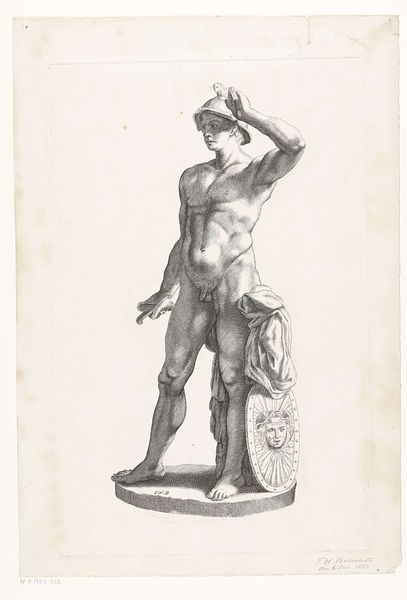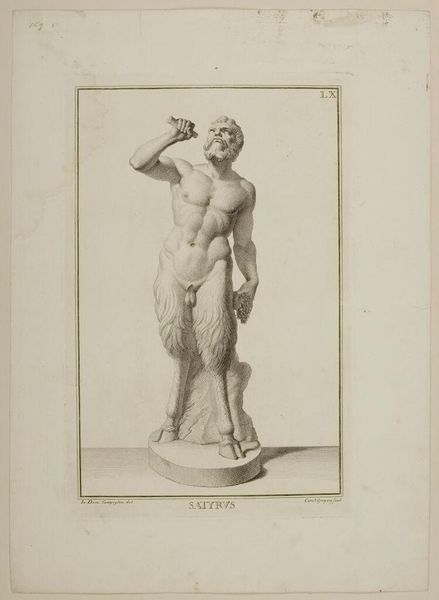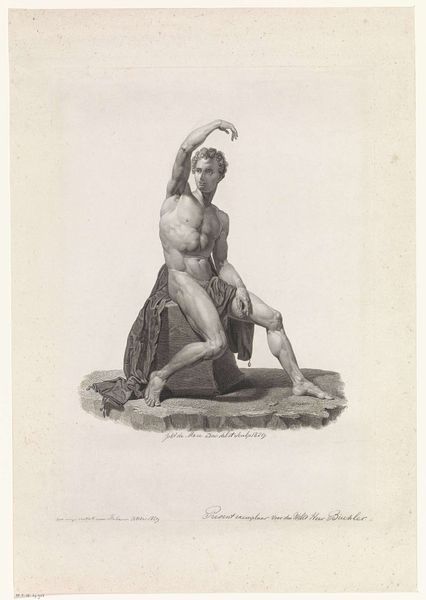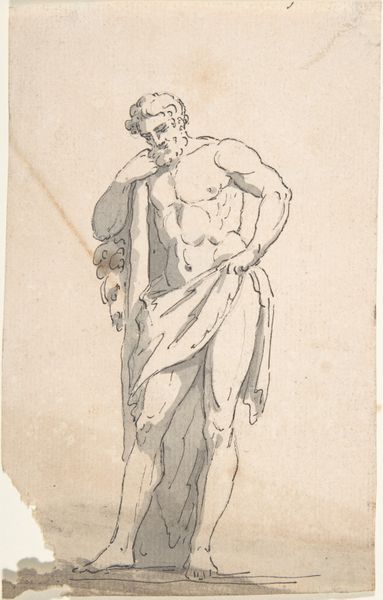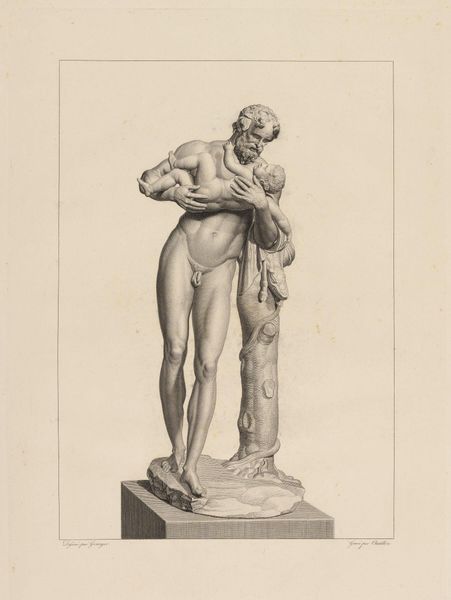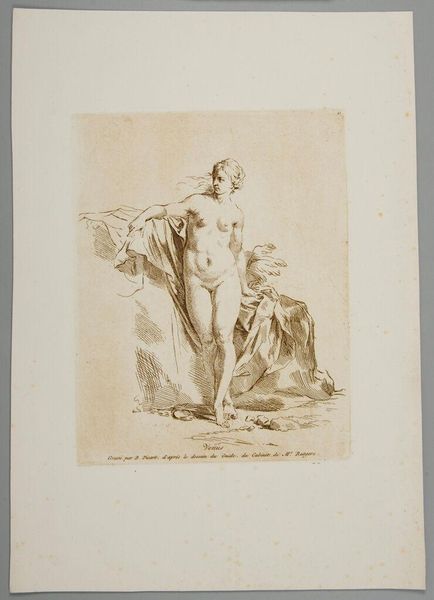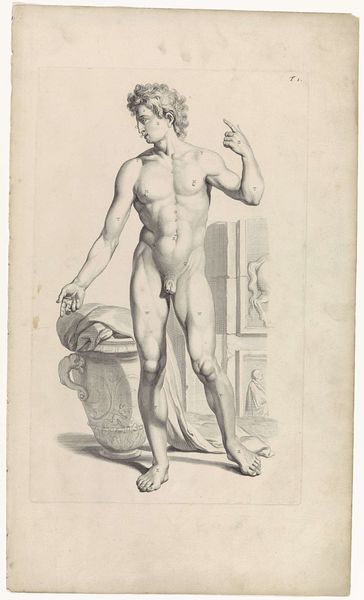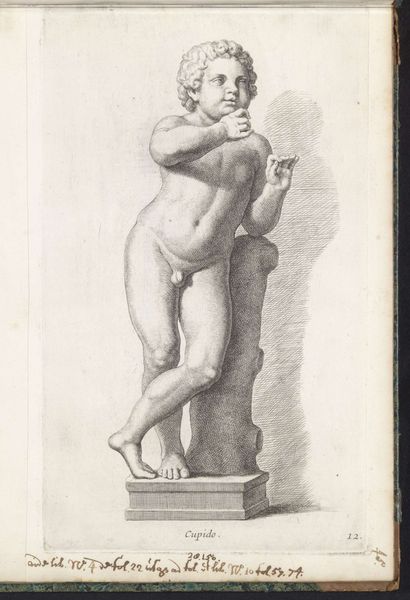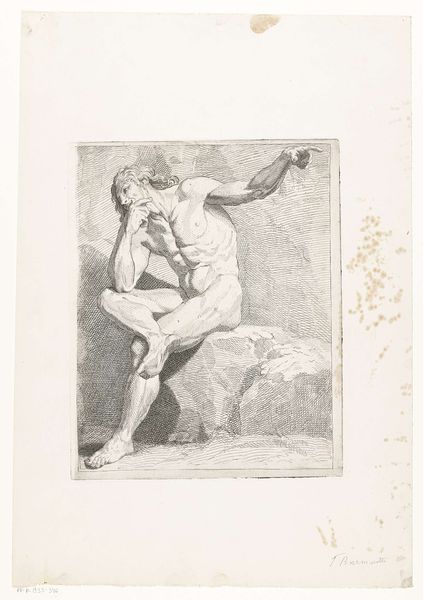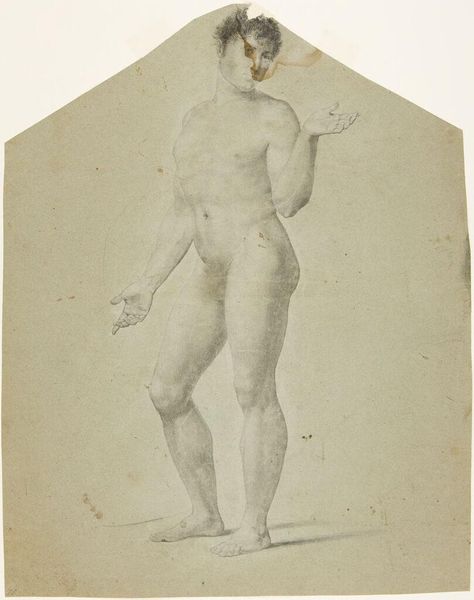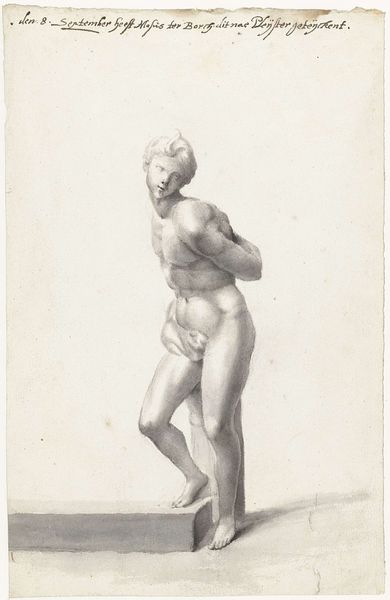
Copyright: CC0 1.0
Curator: Immediately, I'm struck by the serene composure despite the implied movement. Editor: This is Carlo Orsolini's "Venus Caelestis," likely created sometime in the mid-18th century. It's an engraving now held in the Harvard Art Museums. Curator: Note how Orsolini uses cross-hatching to define the drapery. The contrast creates a dynamic interplay between light and shadow. Editor: Venus, of course, is much more than just a pretty figure; she’s a potent symbol of love, beauty, and fertility, deeply rooted in classical mythology. Here, Caelestis suggests a heavenly or divine aspect, elevating her above earthly concerns. Curator: Yes, and notice the slight torsion in the figure, creating a spiral dynamic echoed in the drapery. It avoids any sense of static monumentality. Editor: Examining the details provides glimpses into enduring cultural values and reminds us of our collective past. Curator: Indeed, and the artist's command of line and tone elevates the representational to something truly evocative.
Comments
No comments
Be the first to comment and join the conversation on the ultimate creative platform.
